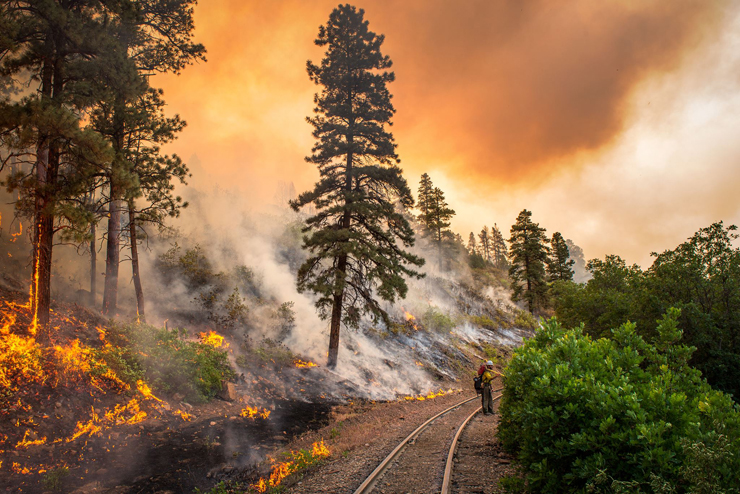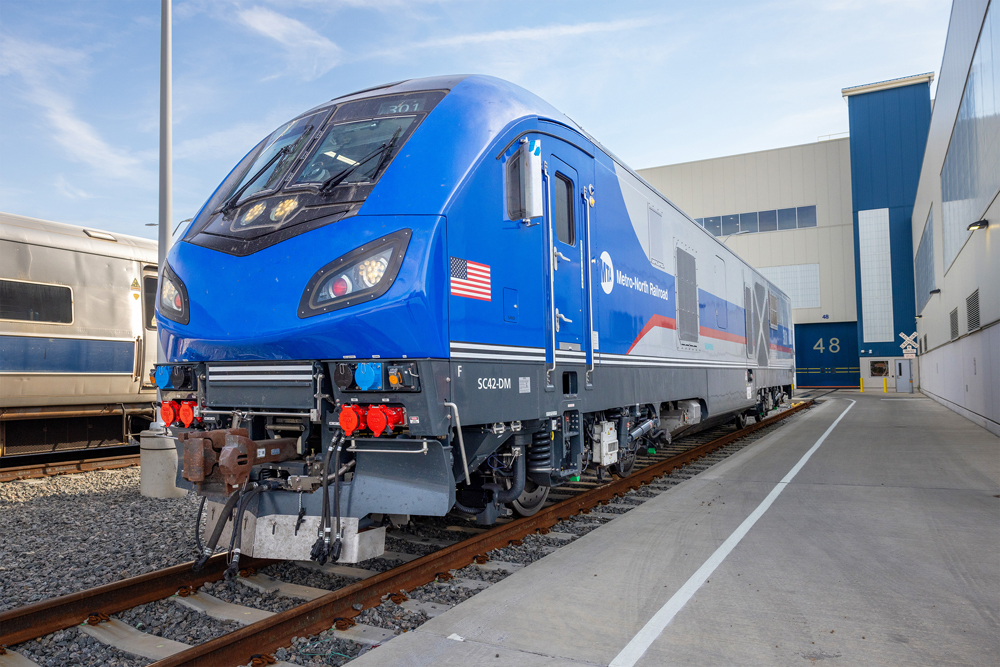DURANGO, Colo. — American Heritage Railways, parent company of the shuttered Durango & Silverton Narrow Gauge Railroad, made a startling announcement Thursday that it was closing Washington’s Mt. Rainier Railroad and Logging Museum until August to “optimize” the organization’s resources.
The announcement comes almost a week after the Durango & Silverton was shut down by a wildfire that has scorched thousands of acres north of Durango and forced hundreds of people to leave their homes.
Officials tells Trains News Wire that the Mt. Rainier Railroad, which was purchased by American Heritage Railways in 2016, will be closed through Aug. 3. The railroad also canceled a number of Train to Table dinner excursions scheduled through August. Passengers whose excursions are canceled as a result of the shutdown will receive full refunds. The Mt. Rainier Railroad logging museum will remain open on a limited basis.
Fifteen employees will be furloughed as a result of the shutdown at Mt. Rainier.
“Resources must be optimized for all of American Heritage Railways’ operations. As a result, after conducting a thorough review of [the company’s] portfolio of businesses, we felt that suspending [Mt. Rainier] operations for a brief period of time would help both railroads in the long run,” Allen C. Harper, co-founder, chairman, and chief executive officer of American Heritage Railways, tells News Wire.
North Carolina’s Great Smoky Mountains Railroad, also owned by American Heritage Railways, will not be closed.
The 416 Fire was first discovered last Friday and has scorched more than 5,000 acres near Hermosa, Colo. As of Thursday night, more than 1,000 people have been evacuated and another 1,500 have been told to prepare to leave in case the fire rapidly expands. A Type 1 Incident Management team is expected to take over firefighting efforts on Saturday morning, signifying that the blaze is one of the most complex and concerning wildfires in the nation.
Durango & Silverton train operations were suspended on June 1 when the fire was discovered. The two daily passenger trains were terminated in Silverton and the passengers were bussed back to Durango. The closure will last through at least June 17.
Officials say when operations resume it will likely be with diesels to reduce the chance that steam locomotive cinders ignite more fires.
“The D&SNG is closely working with its … partners on a daily basis to determine what train services it can operate safely after June 17,” Harper says. “Those decisions are fluid.”
Approximately 150 D&SNG employees were furloughed earlier this week.
Fire officials say that the cause of the fire remains under investigation. However, earlier this week, a Durango Herald report stated that people who live near the tracks saw the fire after the second morning train went by on Friday. One of those people said he believed the fire was caused by a cinder from the locomotive.
Railroad officials have declined to comment on what caused the fire until the investigation is complete. However, Harper tells Trains News Wire that the railroad is considering major changes to its steam locomotive fleet in the future, including converting some to burn oil instead of coal.
“The D&SNGRR is contemplating the conversion of several locomotives,” Harper says.
It is not uncommon for steam locomotive cinders to spark fires, and over the years the Durango & Silverton has employed a number of fire mitigation tactics. A speeder with water and firefighting equipment follows every train during the summer to put out spot fires and the railroad even leases a helicopter to extinguish blazes. Earlier this year, the railroad was honored with an award for its fire mitigation efforts from the National Association of State Foresters, the International Association of Fire Chiefs, the National Fire Protection Association, and the U.S. Forest Service.
This is not the first time a wildfire has forced the closure of the line to Silverton. In 2002, the 72,000-acre Missionary Ridge Fire, forced the railroad to suspend operations for 45 days.














Big loss for western Washington
Curious as to the source of narrow gauge diesel locomotives. From where might they come and what type woud they be?
Then again maybe the campers set the fire.
Sounds like a certain Mr. Harper may own more railroads than he can finance. Maybe Bill Gates should buy the Mt. Rainier Scenic R.R.
I wonder if a train of fire fighting equipment has ever been considered?
Michael Klass
If you’re comparing Mr. Harper to Mr. Ellis(whom we have no factual knowledge of being in financial straights as much as people like to think, sounds more like a prudent business man to me), you are completely wrong…from what I’ve read and heard Mr. Harper hasn’t used any debt to purchase the properties he owns, and he makes a fortune from both the Thomas the Tank licensing and Polar Express(yes, that company that licenses those to tourist carriers is owned by Mr. Harper). There must be some other reasoning behind this odd occurrence, one that we will most likely not be privy to.
Hmm. I’m inclined to agree with Michael Klass on this one. There’s no physical connection between the fire In Colorado and conditions in Washington. Some years ago, I was told that when Harper was ready to assume operations of the Cumbres & Toltec Scenic, a quickly aborted arrangement, he had demanded a massive infusion of capital to make it happen. And I was told that when no such payment was made, the deal fell through. While I can’t claim any insider knowledge of the deal, it did seem odd that it went the way it did.
Sounds like someone overstretched their finances to take on debt to acquire these railroads and now is trying to preserve cash to stay solvent. Wouldn’t be the first time this has happened.
Gee how about dusting off those plans for a new & improved spark-arrestor?
If purists can’t stand that much modification, then something like a water spray hidden inside the stack wouldn’t destroy the historical accuracy of the locomotives’ looks as much. But, oil firing may be the best solution in the long run.
They wouldn’t have to convert all the engines, just enough to maintain a summer schedule. An oil burner is still a “steam engine” and still generates smoke and the correct steam sounds. If it’s that or no steam, I’ll take an oil burner. They could keep a couple as coal burners for historical accuracy and run them during low-fire-risk conditions. As someone else mentioned, they could do the conversions during their 1472 teardown/inspection.
Just a guess, Steven, but it’s possible that the revenue from the D&SNG subsidizes the operation of the Mt. Rainier. Again, I’m just guessing.
This makes no sense. Sure, furlough everyone in Durango. No trains, no income, that makes sense. But why close Elbe? If it is a profitable operation, keeping it open would benefit the company as a whole. They aren’t transferring employees to Colorado, so the only two explanations are that they are borrowing equipment or they are tottering on the edge of insolvency and can’t operate.
I’ve rode the Mt. Rainier train, back in the 80’s. It too traverses thru a lot of forest areas. Are they worried about fires there too, or are they thinking that they are going to be found at fault for the Durango fire, encountering a major expensive fine? Not quite sure what their thinking is closing the Washington train.